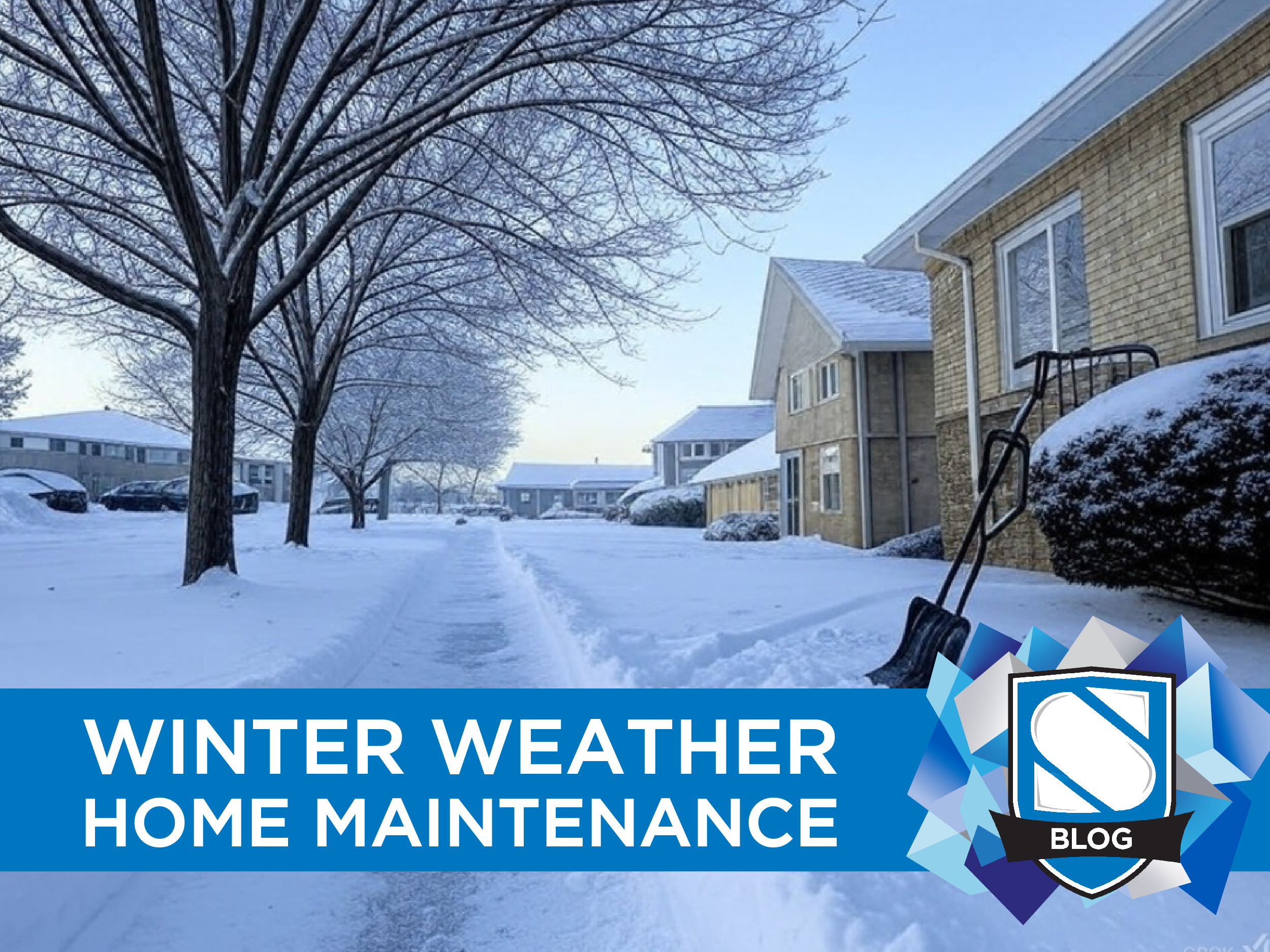With the winter months upon us, it’s important we take extra care to protect the most vulnerable members of our families – our pets. While your puppy or kitten may have a natural fur coat to help shield them from the blowing snow, the winter can still be very hard, even life threatening, on your pets if you take don’t the proper precautions.
Bring them in
As the old saying goes “if you’re cold, they’re cold.” You wouldn’t want to hang outdoors for long periods of time when it’s snowing and blowing and neither do your pets, so keeping them outdoors during the winter is not an option! Being outside in sub-zero temperatures carries a number of serious health risks such as frostbite (a major threat to sensitive paws, noses, and ears), slips and falls on ice, and hypothermia.
You should try and limit your pet’s exposure to the elements as much as possible during the winter months. If they don’t absolutely need to be outside, keep them in. Obviously, you should still take your dog out to relieve his or herself when they need to and maintain regular exercise with walks and play. But keep your excursions brief and take care to monitor the weather conditions and avoid taking them for a walk during particularly cold days or when a flurry or ice storm is likely to hit. This goes for so-called “winter breed” such as Huskies or American Eskimos as well. As much as they might love to jump in snow banks and roll around in the powder and make right fools of themselves, they can still suffer from frostbite and windchill. If your dog is particularly active and used to a lot of outdoor time, try shorter but more frequent play breaks. Take them out, get their sillies out, and bring them back in pronto!
If you have a cat that typically spends time outside, consider restraining that time during the winter months. If they absolutely insist on going out, make sure you prepare for it. Consider installing an enclosed cat shelter they can use to stay dry and at least out of the wind if they decide they are too cold once they get out there. There are numerous options available on the market for this (ranging in elaborateness) but even a simple DIY shelter consisting of an elevated platform, a roof, and some walls is better than nothing.
Try and make sure you never leave while your cat is still outside. You don’t want them whining to get in with cold paws or a chilled tail while you’re off at work or at the store. These tips will help limit the danger your cat faces, but generally speaking they should be a last resort. It’s best just to keep them inside.
Keep them fed
As mammals, our bodies expend huge amounts of energy to keep us warm in cold environments. Energy we get from calories and nutrients in our food. If your pets are going to be spending time out in the cold, it’s important that you adjust their diet to compensate for this and give them the resources to stay warm and healthy!
This is important to remember as many pet owners instinctively do the opposite during the winter months. They figure their cat or dog isn’t spending as much time outdoors and getting as much exercise as normal, so they cut back on their food to avoid weight gain. But, if your dog is still taking regular walks, or your cat is still going out for even just half an hour a day, they’ll need every calorie they can get! Putting your dog on a diet and then taking him out for a -10 degree walk is a recipe for illness and disaster.
Watch out for new hazards
Salting up roads, driveways, and sidewalks is great for tire traction and preventing nasty slips and falls. But, it’s less great for your pet’s delicate paws. Salt agitation is a very common injury during the winter, leading to painful cracking and soreness on the pads of their paws. Worse yet, more serious injuries can occur if salt crystals become wedged in-between paw pads and are left undetected for a long time. These can cause seeping wounds and sores that can easily become infected. Keep your dog safe by wiping their paws off with a damp towel after every walk. Better yet, you can apply “invisible boots,” a product that seals and protects their paws with a cream or waxy substance before a walk to prevent the salt from bothering them at all. Think of as chap stick for paws!
Most of all though, be wary of antifreeze. Antifreeze is deadly toxic and even a small sip can prove fatal for your pet. Sadly though, many animals are attracted to puddles of the stuff due to its sweet smell and taste, making it a horrible trap for poorly supervised pets. Antifreeze usage goes up during the winter as motorists top off their vehicles in their driveway, and as usage increases, so does the risk of spills or improperly stored containers leaving puddles your pets might get into. Always be vigilant and prevent your pet from drinking from anypuddle as you go for walks.
Embrace your inner pet-parent and get them a sweater
Yes, lots of pet clothing looks silly, but between looking silly and keeping my little furry family member comfortable and safe, I know which one I’ll choose every time. If you have a shorthaired breed or a smaller, less hearty dog, get them a jacket or sweater to help keep them warm when you send them out to do their business. If they’ll wear them, go ahead and get them little puppy boots while you’re at it. Some dogs never get the hang of wearing boots, but they can be a lifesaver for chilly paws and are especially important for aging dogs with less joint issues, a little extra traction can help avoid more serious injuries).
If you see a pet in danger, speak up
If you see a pet left out in the cold, don’t keep it to yourself. Note down the address, time, and what the animal looked like and any other relevant details (was it whining to get in, did it look like it was in pain?) and report it to your local SPCA or even the police if the situation is dire enough. Canadian law requires that pets receive adequate shelter and care, so it can be an enforceable situation.
We need to look out for our friends that can’t speak up for themselves and be their voice when they need one. A quick call can help save an animal for a lot of unnecessary suffering, so don’t hesitate to pick up the phone.














0 Comments